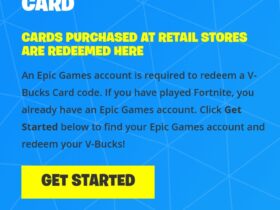In today digital word having a strong online presence is crucial for businesses, and individuals alike. One of the key elements, of a successful online presence is driving organic traffic, to your website. Organic traffic refers to the visitors who find and visit your website, through search engine results without any paid advertisements.
While paid advertising, can provide immediate results, building organic traffic is a long-term strategy, that can yield sustainable growth and establish, your website as a reliable source of information. In this article we will explore, effective techniques and strategies to drive organic traffic, to your website. By implementing these strategies you can increase your website’s visibility, attract your target audience and ultimately boost your conversions and achieve your online goals.
We will dive into various aspects, of driving organic traffic, including search engine optimization (SEO) techniques, content creation strategies and social media marketing. You’ll learn how to optimize, your website for search engines, create valuable and engaging content that resonates, with your audience and leverage social media platforms to expand your reach.
Furthermore, we’ll discuss the importance, of keyword research and how to incorporate relevant keywords, into your content naturally. You’ll discover, the power of link building both internal and external and how it can improve your website authority and visibility in search engine rankings.
Whether you re a business owner, a blogger or a content creator understanding, how to drive organic traffic, to your website is essential for achieving, your online objectives. So let delve into the strategies and technique that can help you to increase your website visibility and engage to your target audience and drive sustainable organic traffic.
Does spark traffic good for website (Bot-Generated Traffic)
Using bot-generated traffic to your website, is not recommended. Bot-generated traffic, refers to artificially generated, visits to your website by automated software programs known as bots. While it may seem tempting to boost your traffic numbers quickly there are several reasons, why using bot-generated traffic is not a good idea.
. Violation of Terms of Service. Many online platforms including search engines and advertising networks have strict policies against using bot-generated traffic. If these platforms detect suspicious traffic patterns they may penalize your website by reducing its visibility, suspending your account or even banning your website altogether.
. Low-Quality Traffic. Bot-generated traffic typically lacks genuine human engagement. Bots do not interact with your content, make purchases or engage with your website in a meaningful way. This can result in high bounce rates, low time on site and negligible conversion rates. Ultimately, it provides little value to your website and business.
. Risk to Reputation. Using bot-generated traffic, can harm your brands reputation. Users and potential customers, may perceive the inflated traffic numbers as suspicious, or unethical undermining trust and credibility. Building a strong brand and fostering genuine relationships with your audience is more valuable in the long run.
Instead of relying on bot-generated traffic, it is advisable to focus on legitimate strategies for driving organic and genuine traffic to your website.
How to increase traffic to website
1. Search Engine Optimization (SEO
2. Try Pay-per-click (PPC) advertising
3. Social Media Marketing
4. Guest Blogging
5. Influencer Marketing
6. Pinterest ads
7. Email marketing
8. Collaborate with Other Websites
1. Search Engine Optimization (SEO
When it comes to organic traffic Search Engine Optimization (SEO) is the key, that unlocks its potential. SEO enables you to optimize your website, and content to rank higher in search engine results, by attracting targeted visitors who are actively searching for what you offer. We will explore powerful strategies to drive organic traffic through SEO.
- Conduct Keyword Research
- Create High-Quality, Optimized Content
- Build High-Quality Backlinks
- Regularly Update and Maintain Your Website
Conduct Keyword Research
Keyword research forms the foundation of effective SEO. You will start identifying relevant keywords and phrases that your target audience, is likely to search for. You can use keyword research tools like Google Keyword Planner, SEMrush or Moz’s Keyword Explorer to discover high-volume, low-competition keywords. These keywords are naturally throughout your website, including titles, headings, meta descriptions and content.
Create High-Quality, Optimized Content
Content is the fuel that drives organic traffic. Craft well-written, informative and engaging content that will addresses, the needs and interests of your target audience. Incorporate your target keywords strategically within the content to improve its visibility, in search engine results. Use descriptive and enticing titles, headers and meta tags to optimize your content, for search engines. Remember quality content that provides value, to readers is more likely to be shared, linked to and ranked higher by search engines.
Build High-Quality Backlinks
Backlinks are a prominent ranking factor, in SEO. Focus on gaining high-quality backlinks from reputable and relevant websites. Engage in outreach efforts, guest blogging and collaborate with industry influencers, to earn backlinks. Quality backlinks are signal to search engines that your website, is trustworthy and authoritative, leading to improved organic rankings.
Regularly Update and Maintain Your Website
Search engines favor fresh and updated content. Regularly publish new blog posts, articles or other forms of contents to keep your website active. Update older content to ensure that its relevance and accuracy. Regular maintenance such as fixing broken links, resolving technical issues and improving website speed shows to search engines that your website is reliable and user-friendly.
2. Try Pay-per-click (PPC) advertising
Pay-per-click (PPC) is refer as an online advertising model, in which advertisers pay a fee each time their ad is clicked. It’s a way of buying visits, to your website rather than earning them organically.
In a PPC campaign, advertisers bid on specific keywords or target specific audiences and their ads are displayed on search engines or other online platforms. When a user performs a search, or meets the targeting criteria set by the advertiser the ads are shown. If any user clicks on the ad the advertiser is charged a certain amount, hence the term “pay-per-click.”
The most well-known, PPC platform is Google Ads which displays ads, on Google search engine results pages (SERPs) and its advertising network. However there are also other popular PPC platforms like Bing Ads, Facebook Ads, LinkedIn Ads and Twitter Ads each with its own targeting options and ad formats.
PPC advertising offers several advantages, including
1. Immediate Results. PPC campaigns can generate immediate traffic and visibility, for your website or business. Once your campaign is set up your ads can start appearing and driving clicks within a short period of time.
2. Targeted Advertising. PPC platforms allows you to target specific keywords, demographics, interests or behaviors. This targeting capability, enables you to reach a highly relevant audience, that is more likely to be interested in your products, or services.
3. Control and Flexibility. PPC campaigns provide advertisers with control over, their budgets, ad messaging and targeting parameters. You can set daily, or monthly budgets, adjust bids, pause or resume campaigns and make changes to your ad copy or targeting settings as needed.
4. Cost Control. With PPC advertising you only pay when someone clicks, on your ad which means you have control over your advertising costs. You can set maximum bid amounts, allocate budgets and adjust bids based on the performance of your campaigns.
So how do you start? To start pay-per-click (PPC) advertising and drive traffic to your website. First thing to do is to determine your objectives, for the PPC campaign. Are you planning to increase website traffic, generate leads or drive conversions? Defining your goals, will help you create targeted campaigns and measure success effectively. Conduct keyword research to identify relevant keywords, for your PPC campaign. Focus on long-tail keywords, that align with your target audience search intent and have lower competition.
Develop compelling and relevant ad copy that entices users, to click on your ads. Craft attention-grabbing headlines and concise, persuasive descriptions that highlight, the unique selling points of your products or services. Incorporate relevant keywords, into your ad copy to improve ad relevance and quality score.
3. Social Media Marketing
Social media marketing is the practice, of using social media platform to promote product and services or brands and engage with the target audience. It involve, creating and sharing contents, on social media networks to achieve marketing goals such as increasing brand awareness, driving website traffic, generating leads or fostering customer engagement.
Social media marketing utilizes, various social media platforms, including but not limited to Facebook, Instagram, Twitter, LinkedIn, YouTube, Pinterest and Snapchat. Each platform, has its own unique features, user demographics and content formats allowing businesses to tailor their strategies, to specific target audiences and marketing objectives. Driving traffic to your website through social media marketing is a powerful strategy to increase brand awareness, engage with your audience and ultimately drive more visitors to your site.
When you want to start social media marketing you need to start by develop high-quality and engaging content, that resonates with your target audience. This can include, blog posts, articles, videos, infographics and more. Make sure your content is valuable, educates, entertains or solves problem for your audience. Share this content, on your social media channels with catchy headlines and compelling visuals to grab attention and, encourage clicks.
Next optimize your social media profiles, to include relevant information about your website and business. Include a link to your website in the bio or “about” section of your profiles. Make it easy for users, to find and visit your website by providing clear and clickable links. Social media platform offer robust advertising options to target, specific audiences and drive traffic, to your website. Leverage platforms, like Facebook Ads, Instagram Ads, LinkedIn Ads and Twitter Ads to create, targeted campaigns. Use compelling ad copy, captivating visuals and relevant calls-to-action to entice users to click through to your website.
Actively engage, with your social media audience by responding their comments, messages and mentions. Make sure that you encourage conversations, ask questions and, provide valuable insights. By building relationships and fostering engagement you can increase brand loyalty and drive more traffic, to your website as users become more interested in what you have to offer.
4. Guest Blogging
A guest blogger, is someone who writes blog posts for another person blog. This is usually done because, the guest blogger has something they want to say but don’t have their own platform, to say it on.
The reason someone would want to be a guest blogger is because, it allows them to reach a new audience that they otherwise wouldn’t have been able to. It’s a way of getting your name and your work out there in front of people, who might not have seen it otherwise.
The process of guest blogging, usually starts with the guest blogger reaching out, to the blog owner and asking if they would be interested, in publishing a post. If the answer is yes then the guest blogger will now submit, a story or article for the blog owner, to take a look at it. If the blog owner likes what they see then they will publish the guest blog post on their site. This will usually include a byline with the guest blogger’s name and a link back to their own website.
If you want to succeed in driving traffic with guest blogging, you need to make sure the target blogs are in the same or similar niche as your blog. There are some reasons for this.
Firstly, if the target blog is in the same niche as your blog its readers are likely to be interested in your blog too. This means that they are more likely to click on a link to your blog and more likely to become regular readers.
Secondly, if the target blog is in a different niche to your blog its readers are likely to be less interested in your blog. This means that they are less likely to click on a link to your blog, and less likely to become regular readers.
Thirdly, if the target blog is in a different niche to your blog the blog owner is likely to be less interested in featuring your blog on their site. This means that it will be harder, to get your guest blog post published on the site, and that you are less likely to drive traffic to your blog as a result.
So if you want to drive traffic to your blog with guest blogging make sure the target blogs are in the same or similar niche as your blog. This will maximize your chances of success.
5. Influencer Marketing
Organic traffic is the key to any successful website. And what better way, to drive organic traffic than through influencer marketing?
Influencer marketing is a type of marketing strategy in which influencers, or people with a large social media following are used to promote their goods or products.
There are many benefit, to using influencer marketing to drive organic traffic to your website. First, it is a very cost-effective way, to reach a large audience. influencers have already built up a following of people, who trust their opinion. Secondly it is a very effective way to build brand awareness and generate leads.
If you re looking for a way to drive organic traffic, to your website through influencer marketing the first step you need to take is to find influencers who align, with your brand. This means finding influencers who have a similar target audience to your own and who produce content that would be of interest to your target audience.
There are a few different ways, to go about finding influencers who align, with your brand. One is to search for relevant hashtags, on social media platforms, like Twitter and Instagram. For example if you sell eco-friendly home goods you could search for hashtags like #sustainability or #ecofriendly. This will give you a list of users who are posting about topics related to your brand.
Another way to find relevant influencers is to use a tool like Google Alerts. You can set up Google Alerts to monitor the web for mentions of your brand or keywords, related to your brand this can be a great way, that you will use to find a good influencers, who are already talking about your brand or who are talking about topics that are relevant to your brand.
After when you have found an influencer take a look on their content and check, if it is a good fit for your brand. If you re happy with what you see then reach out to the influencer and see if they will be interested, in working with you. If they are, you can start working on creating content that will help you drive organic traffic to your website.
6. Pinterest ads
Pinterest is a big online platform that you can reach your potential customers as they will visit the platform to consider future activities and purchases. According to Pinterest, 100 percent active users says that they use it to find new brands and services. And, in another study, 90% of respondents also said that Pinterest gives them ideas about which products to purchase.
Pinterest is very big popular among niche groups like renovating, landscaping, home decorating, and DIY crafts and is ideal for businesses hoping to make inroads with these markets.
Pinterest is home to Promoted Pins, a form of paid advertising that pushes your Pins to the top of your customers’ search results, helping you stand out from the crowd. Promoted Pins blend in with the rest of Pinterest’s content, making it a great tool for capturing your customers’ attention and pulling them to your online store.
7. Email marketing
Email marketing is type of marketing that involves, sending targeted emails to a group of individuals or subscribers. It is a direct and personalized method of communicating with your audience typically with the goal of promoting products, services or building relationships.
Email marketing allows businesses to reach their audience directly, in their inbox delivering message tailored to their interests, needs and, preferences. Email marketing is a powerful tool for driving huge amount of traffic to your website. It allows you, to reach a targeted audience directly and, engage with them on a personal level.
The first step, in driving traffic with email marketing is to build, a quality email list. Focus on growing a list of subscribers who have expressed genuine interest in your brand or, niche. Offer valuable content or, incentives such as exclusive discounts or free resources to encourage visitors to sign up for your emails.
To drive traffic, your emails should be engaging and personalized. Segment your email list based on demographics, interests, or past interactions to send targeted emails that resonate with each subscriber. Use a conversational tone, compelling subject lines and visually appealing designs to capture their attention.
8. Collaborate with Other Websites
Collaborating with other websites refers to the act of working together, with other website owners or organizations, to achieve common goals such as driving traffic, expanding reach or, promoting mutual interests. It involves joining forces, pooling resources and leveraging each other strengths, to achieve shared benefits.
Website collaboration can take various forms, including guest blogging, co-branded content creation, backlink exchanges, social media collaborations, affiliate partnerships and more. The specific collaboration method depends on the objectives and interests of both parties involved.
By collaborating with other websites you can tap into new audiences, enhance your online visibility and increase, the chances of attracting relevant traffic to your own website. It allows you, to benefit from the expertise, resources and established audience of your collaborators while also providing value to them in return.






Leave a Review